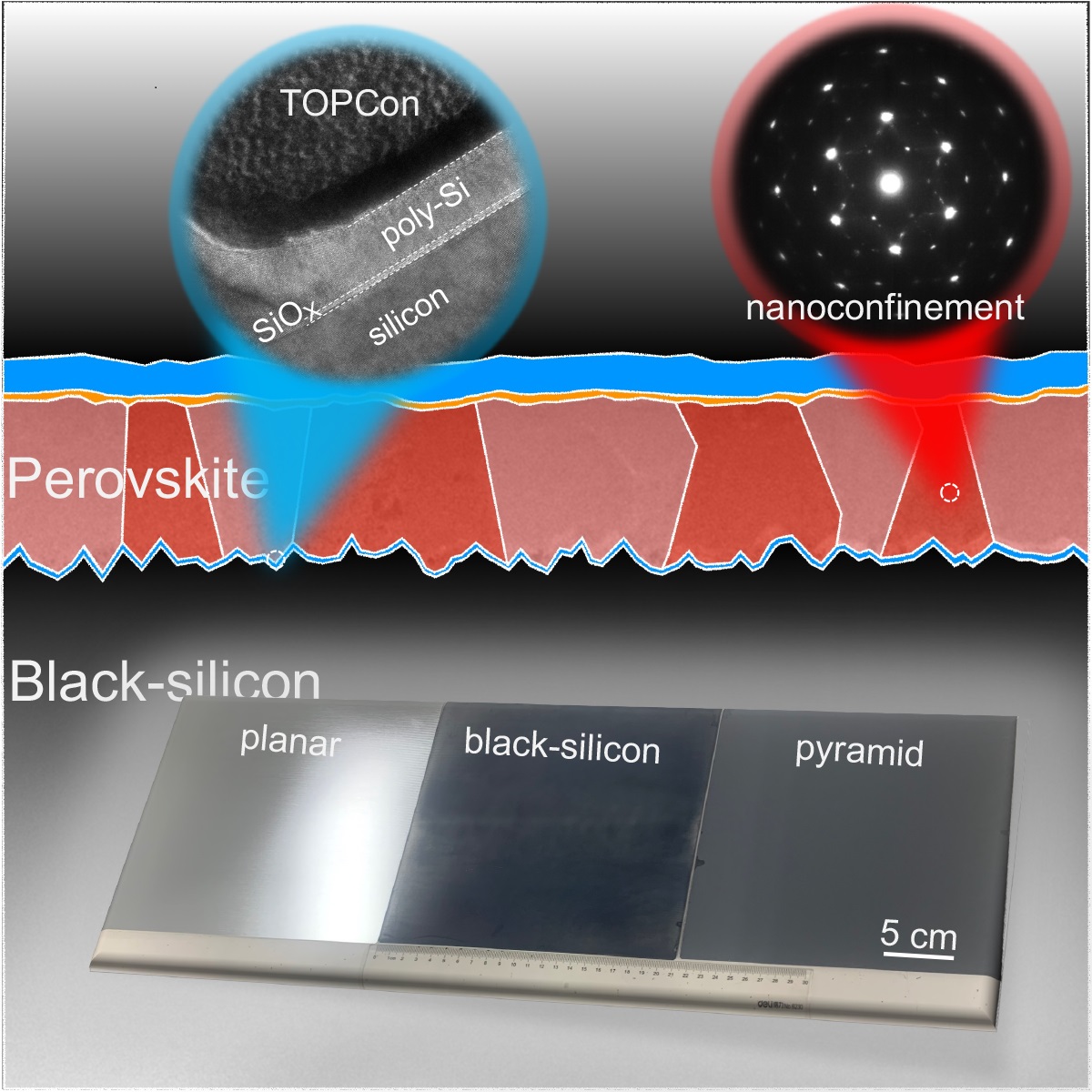A research group led by Prof. YE Jichun at the Ningbo Institute of Materials Technology and Engineering (NIMTE) of the Chinese Academy of Sciences (CAS), has developed high-performance monolithic perovskite/black silicon (b-Si) solar cells with a tunnel oxide passivated contact (TOPCon), achieving a certified power conversion efficiency (PCE) of 28.2%. The relevant study was published in Joule.
Perovskite/silicon tandems offer a promising pathway to increase the PCE of solar cells with relatively low cost, thus predicted as an emerging focus in the field of high-efficiency solar cells.
However, most reported monolithic perovskite/silicon tandems either suffer from high costs and limited light trapping, or have trouble in achieving high-quality perovskite films, thus leading to a great challenge in optimizing the performance of perovskite/b-Si solar cells.
To address this issue, scientists at NIMTE developed the first monolithic perovskite/Si tandem solar cells based on industry-relevant b-Si with TOPCon structures.
Combined with the TOPCon, the surface reconstruction of the b-Si contributes to the excellent trade-off between the high-level surface passivation and the broadband light trapping.
The reconstructed nanotexture of b-Si significantly can increase the moisture resistance, facilitating the wetting of perovskite. In addition, the b-Si guides the vertically aligned crystal growth of perovskite through nanoconfinement effect, reducing carrier recombination and facilitating carrier collection. Moreover, the b-Si alleviates the film strains, thus improving the stability of the device.
With an open-circuit voltage (VOC) of 1.80 V, fill factor (FF) of 81.8%, and a short-circuit current density (JSC) of 19.2 mA/cm2, the prepared monolithic perovskite/b-Si TOPCon tandem solar cells yield a remarkably high certified PCE of 28.2%, which is among the highest reported values for perovskite/Si solar cells with either TOPCon or double-side-textured Si to date.
The novel strategy in this work can shed light on the development and fabrication of high-performance perovskite/b-Si tandem solar cells.
This work was supported by the National Key Research and Development of China (No. 2018YFB1500103), Zhejiang Energy Group (No. znkj-2018-118), and Key Research and Development Program of Zhejiang Province (No. 2021C01006).

Fig. The monolithic perovskite/black silicon TOPCon tandem solar cells (Image by NIMTE)
Contact
YANG Xi
Ningbo Institute of Materials Technology and Engineering
Email: yangx@nimte.ac.cn

